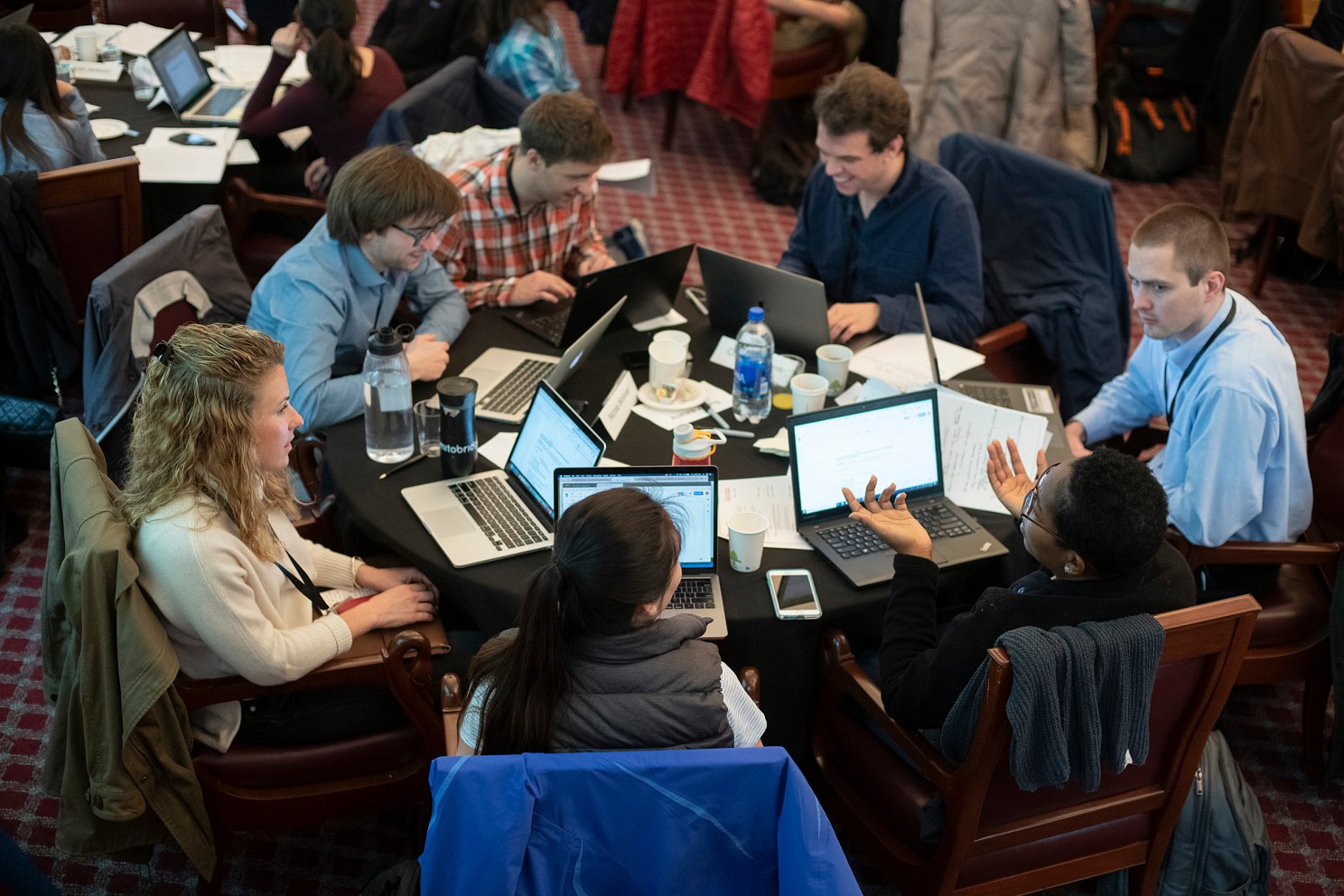Advice: Dream big, listen to the market, ask for help

Harvard graduate students and postdoctoral researchers participated in OTD’s Bench-to-Business Boot Camp on May 1-2./Photo by Tony Rinaldo
Ever wondered how university innovations start the journey toward becoming products that the world can use? Very often, at Harvard, graduate students and postdoctoral researchers have a hand in it.
At the third annual Bench-to-Business Boot Camp, hosted by Harvard Office of Technology Development (OTD) on May 1–2, early-career researchers gained the skills to engage confidently in the practice of technology commercialization and entrepreneurship.
The two-day workshop brought in 20 guest speakers to lead a series of interactive workshops, lectures, and panel discussions, exposing participants to the fundamentals — and the joy — of scientific innovation.
From over a hundred applications, 44 researchers from across the University were selected to participate, including 13 new OTD Business Development Fellows.
The group discovered 10 takeaways from the event:
Aim high
When Kevin Eggan, professor of stem cell and regenerative biology, began his career researching stem cells, it wasn’t clear where a supply of stem cells would come from, let alone how they might become useful in treating disease. Over the course of two decades of innovation, his lab’s work has now advanced to the point where somatic cells from patients with ALS have been turned back into stem cells, and ultimately enabling the development of a new therapeutic candidate to treat ALS.
Protect intellectual properly before it is publicly disclosed
“You have to teach people how to make and use the invention,” said patent attorney David Resnick, partner at Nixon Peabody. But the timing is essential. “It doesn’t take a lot to destroy your invention,” he said, and where prior art is concerned, “an abstract is more than enough to invalidate your patent.” Even if work is scheduled to be presented next week, there may still be time for OTD to file a provisional patent application in the meantime.
Think broadly about the possible applications
Research associate Tanya Shirman spoke about how research in Joanna Aizenberg’s lab at the Wyss Institute on the structure and function of materials found in nature has inspired a new method for rational design of the geometry and composition of catalytic systems. The research team has taken a strategic approach to considering whether these new catalytic materials might be put to best use in applications directed at chemical synthesis, emissions control, green energy, or something else.
Focus to identify the right market
“You have to have a technology that works, but you also have to have a market that can accept the technology,” said Gordon Nameni, Founder and Managing Director at August Brown, a Milwaukee-based technology management consulting firm.
Study up
Curriculum Services Specialist Mallory Stark and Information Research Specialist Poping Lin, who work at Harvard Business School’s Baker Library, suggested several databases to dig into, including Capital IQ, Thomson One, Science Direct, and Factiva.
For the full list of lessons learned at the event, visit OTD’s website.




